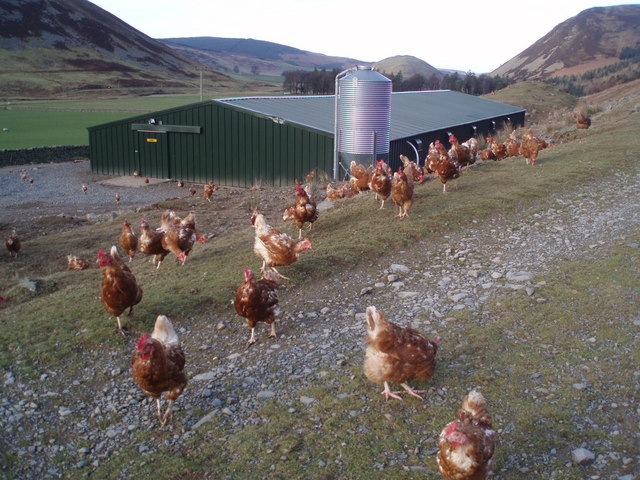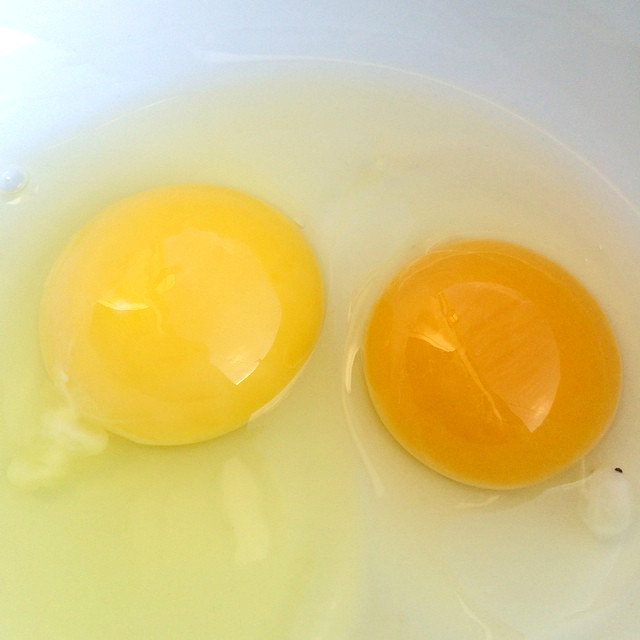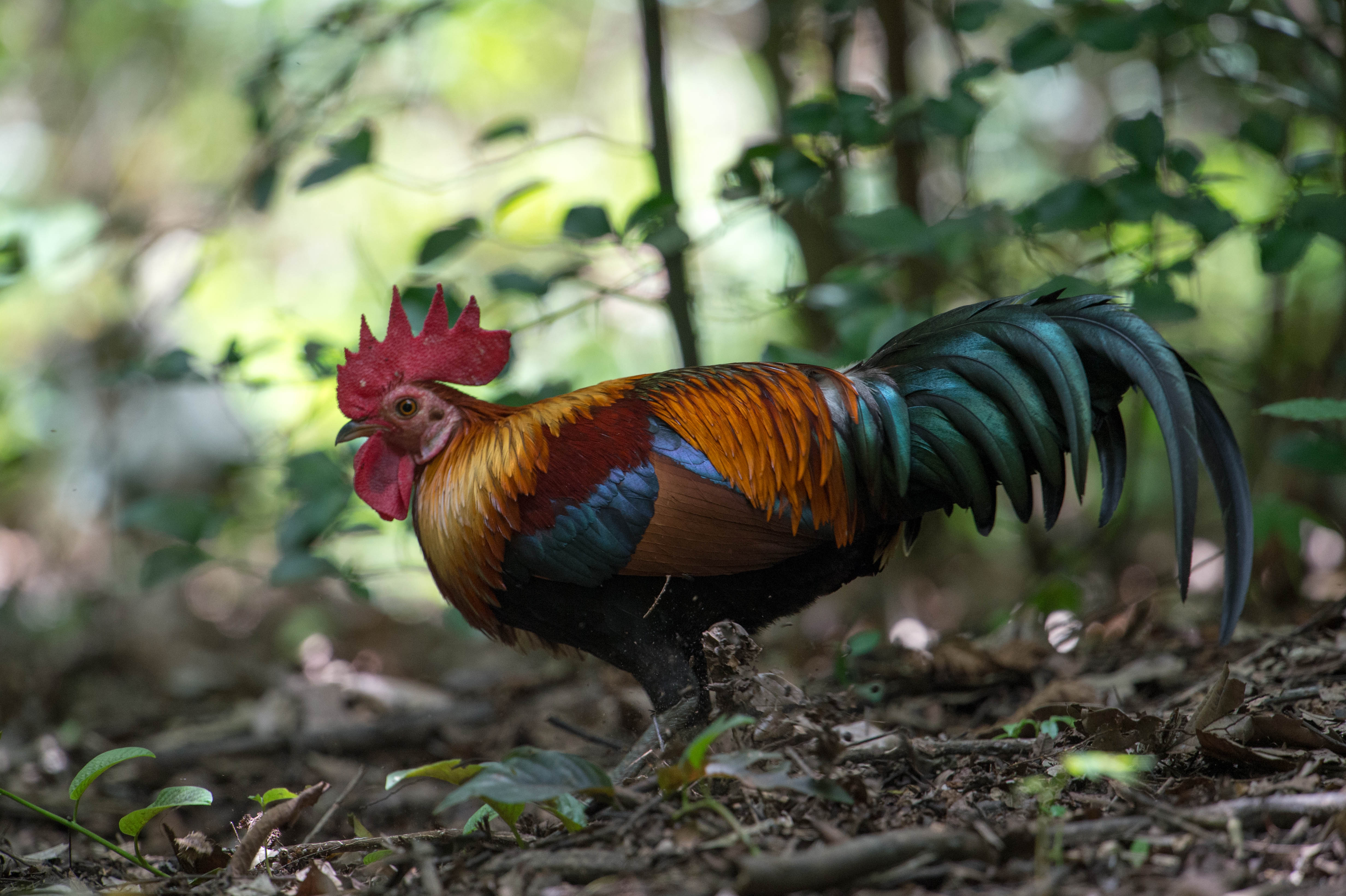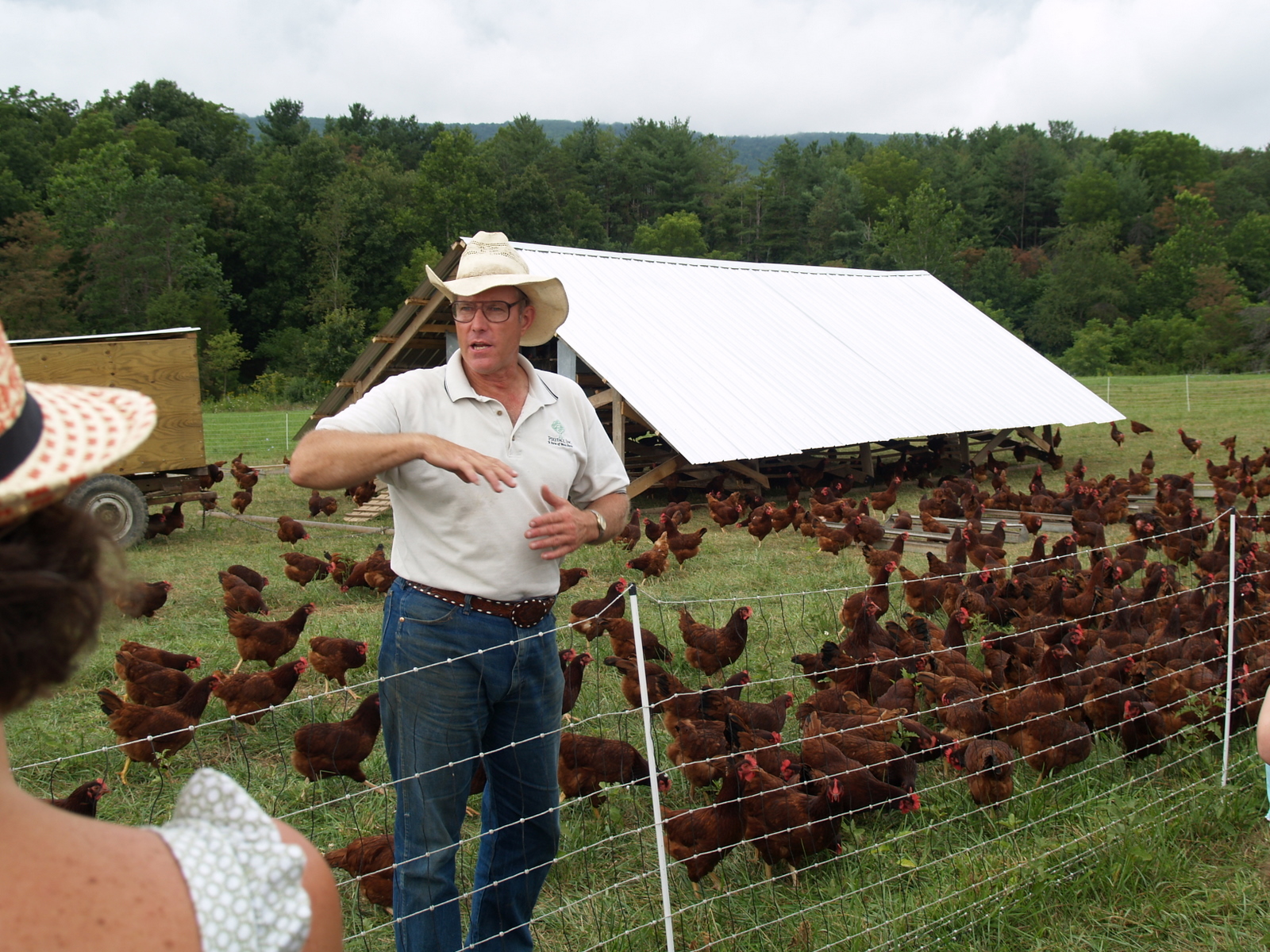|
Free-range
Free range denotes a method of farming husbandry where the animals can roam freely outdoors for at least part of the day, rather than being confined in an enclosure for 24 hours each day. On many farms, the outdoors ranging area is fenced, thereby technically making this an enclosure, however, free range systems usually offer the opportunity for the extensive locomotion and sunlight that is otherwise prevented by indoor housing systems. ''Free range'' may apply to meat, eggs or dairy farming. The term is used in two senses that do not overlap completely: as a farmer-centric description of husbandry methods, and as a consumer-centric description of them. There is a diet where the practitioner only eats meat from free-range sources called ethical omnivorism. In ranching, free-range livestock are permitted to roam without being fenced in, as opposed to intensive animal farming practices such as the concentrated animal feeding operation. In many agriculture-based economies ... [...More Info...] [...Related Items...] OR: [Wikipedia] [Google] [Baidu] |
Free-range Eggs
Free-range eggs are eggs produced from birds that may be permitted outdoors. The term "free-range" may be used differently depending on the country and the relevant laws, Eggs from hens that are only indoors might also be labelled ''cage-free'', ''barn'', ''barn-roaming'' or ''aviary'', following the animal happiness certification policies, also known as "happy chickens" or "happy eggs". This is different from birds that are reared in systems labelled as '' battery cages'' or '' furnished cages''. Legal definition Legal standards defining free range can be different or non-existent depending on the country. Various watchdog organizations, governmental agencies, and industry groups adhere to differing criteria regarding what constitutes a "free-range" and "cage-free" status. In Massachusetts, there was a proposal to ban the sale of meat or eggs from caged animals, regardless of where they were raised. This potential shift from caged to cage-free production has raised concerns ... [...More Info...] [...Related Items...] OR: [Wikipedia] [Google] [Baidu] |
Yarding
In poultry keeping, yarding is the practice of providing the poultry with a fenced yard in addition to a poultry house. Movable yarding is a form of managed intensive grazing. Yarding is often confused with free range. The distinction is that free-range poultry are either totally unfenced, or the fence is so distant that it has little influence on their freedom of movement. Historical practice Before the discovery of vitamins A and D in the 1920s, green feed and sunshine were essential to the health of poultry. Vitamin D was synthesized from sunlight on the skin (as with humans), while vitamin A was obtained through green forage plants such as grass. Yards small enough to be fenced economically were soon stripped of palatable green forage and become barren. This is followed by a build-up of manure, parasites, and other pathogens. Free range husbandry was the most common method in these early days. Most farms had only a small free-range barnyard flock. Larger flocks were k ... [...More Info...] [...Related Items...] OR: [Wikipedia] [Google] [Baidu] |
Chickens
The chicken (''Gallus gallus domesticus'') is a domesticated subspecies of the red junglefowl (''Gallus gallus''), originally native to Southeast Asia. It was first domesticated around 8,000 years ago and is now one of the most common and widespread domesticated animals in the world. Chickens are primarily kept for their meat and eggs, though they are also kept as pets. As of 2023, the global chicken population exceeds 26.5 billion, with more than 50 billion birds produced annually for consumption. Specialized breeds such as broilers and laying hens have been developed for meat and egg production, respectively. A hen bred for laying can produce over 300 eggs per year. Chickens are social animals with complex vocalizations and behaviors, and feature prominently in folklore, religion, and literature across many societies. Their economic importance makes them a central component of global animal husbandry and agriculture. Nomenclature Terms for chickens include: * ' ... [...More Info...] [...Related Items...] OR: [Wikipedia] [Google] [Baidu] |
De-beaking
Beak trimming (also spelled as beak-trimming; informally as debeaking), or beak conditioning, is the partial removal of the beak of poultry, especially layer hens and turkeys, although it is also performed on some quail and ducks. When multiple birds are confined in small spaces, they are more likely to hurt each other through pecking. Beak trimming aims to avoid damage done by pecking, although the practice is criticized by animal welfare organizations and banned in several European countries. Beak trimming is most common in egg-laying strains of chickens. In some countries, such as the United States, turkeys routinely have their beaks trimmed. In the UK, only 10% of turkeys are beak trimmed. In close confinement, cannibalism, feather pecking and aggression are common among turkeys, ducks, pheasants, quail, and chickens of many breeds (including both heritage breeds and modern hybrids) kept for eggs. The tendency to cannibalism and feather pecking varies among different strains ... [...More Info...] [...Related Items...] OR: [Wikipedia] [Google] [Baidu] |
Husbandry
Animal husbandry is the branch of agriculture concerned with animals that are raised for meat, fibre, milk, or other products. It includes day-to-day care, management, production, nutrition, selective breeding, and the raising of livestock. Husbandry has a long history, starting with the Neolithic Revolution when animals were first domesticated, from around 13,000 BC onwards, predating farming of the first crops. During the period of ancient societies like ancient Egypt, cattle, sheep, goats, and pigs were being raised on farms. Major changes took place in the Columbian exchange, when Old World livestock were brought to the New World, and then in the British Agricultural Revolution of the 18th century, when livestock breeds like the Dishley Longhorn cattle and Lincoln Longwool sheep were rapidly improved by agriculturalists, such as Robert Bakewell, to yield more meat, milk, and wool. A wide range of other species, such as horse, water buffalo, llama, rabbit, and guinea ... [...More Info...] [...Related Items...] OR: [Wikipedia] [Google] [Baidu] |
Chicken Wire
The chicken (''Gallus gallus domesticus'') is a domesticated subspecies of the red junglefowl (''Gallus gallus''), originally native to Southeast Asia. It was first domesticated around 8,000 years ago and is now one of the most common and widespread domesticated animals in the world. Chickens are primarily kept for their meat and eggs, though they are also kept as pets. As of 2023, the global chicken population exceeds 26.5 billion, with more than 50 billion birds produced annually for consumption. Specialized breeds such as broilers and laying hens have been developed for meat and egg production, respectively. A hen bred for laying can produce over 300 eggs per year. Chickens are social animals with complex vocalizations and behaviors, and feature prominently in folklore, religion, and literature across many societies. Their economic importance makes them a central component of global animal husbandry and agriculture. Nomenclature Terms for chickens include: * ... [...More Info...] [...Related Items...] OR: [Wikipedia] [Google] [Baidu] |
Chickens Seeking Shade
The chicken (''Gallus gallus domesticus'') is a domesticated subspecies of the red junglefowl (''Gallus gallus''), originally native to Southeast Asia. It was first domesticated around 8,000 years ago and is now one of the most common and widespread domesticated animals in the world. Chickens are primarily kept for their meat and eggs, though they are also kept as pets. As of 2023, the global chicken population exceeds 26.5 billion, with more than 50 billion birds produced annually for consumption. Specialized breeds such as broilers and laying hens have been developed for meat and egg production, respectively. A hen bred for laying can produce over 300 eggs per year. Chickens are social animals with complex vocalizations and behaviors, and feature prominently in folklore, religion, and literature across many societies. Their economic importance makes them a central component of global animal husbandry and agriculture. Nomenclature Terms for chickens include: * ''Bidd ... [...More Info...] [...Related Items...] OR: [Wikipedia] [Google] [Baidu] |
Chicken Tractor
A chicken tractor (sometimes called an ark) is a movable chicken coop lacking a floor. Chicken tractors may also house other kinds of poultry. Most chicken tractors are a lightly built A-frame An A-frame is a basic structure designed to bear a Structural load, load in a lightweight economical manner. The simplest form of an A-frame is two similarly sized Beam (structure), beams, arranged in an angle of 45 degrees or less, attached a ... which one person can drag about the yard. It may have wheels on one or both ends to make this easier. Use Chicken tractors allow free ranging along with shelter, allowing chickens fresh forage such as grass, weeds and bugs (although these will quickly be stripped away if the tractor remains in the same place for too long), which widens their diet and lowers their feed needs. Unlike fixed coops, chicken tractors do not have floors so there is no need to clean them out. They echo a natural, symbiotic cycle of foraging through which the birds ... [...More Info...] [...Related Items...] OR: [Wikipedia] [Google] [Baidu] |
United States Department Of Agriculture
The United States Department of Agriculture (USDA) is an executive department of the United States federal government that aims to meet the needs of commercial farming and livestock food production, promotes agricultural trade and production, works to assure food safety, protects natural resources, fosters rural communities and works to end hunger in the United States and internationally. It is headed by the secretary of agriculture, who reports directly to the president of the United States and is a member of the president's Cabinet. The current secretary is Brooke Rollins, who has served since February 13, 2025. Approximately 71% of the USDA's $213 billion budget goes towards nutrition assistance programs administered by the Food and Nutrition Service (FNS). The largest component of the FNS budget is the Supplemental Nutrition Assistance Program (formerly known as the 'Food Stamp' program), which is the cornerstone of USDA's nutrition assistance. The United Stat ... [...More Info...] [...Related Items...] OR: [Wikipedia] [Google] [Baidu] |
Free Range Hens - Geograph
Free may refer to: Concept * Freedom, the ability to act or change without constraint or restriction * Emancipate, attaining civil and political rights or equality * Free (''gratis''), free of charge * Gratis versus libre, the difference between the two common meanings of the adjective "free". Computing * Free (programming), a function that releases dynamically allocated memory for reuse * Free software, software usable and distributable with few restrictions and no payment *, an emoji in the Enclosed Alphanumeric Supplement block. Mathematics * Free object ** Free abelian group ** Free algebra ** Free group ** Free module ** Free semigroup * Free variable People * Free (surname) * Free (rapper) (born 1968), or Free Marie, American rapper and media personality * Free, a pseudonym for the activist and writer Abbie Hoffman * Free (active 2003–), American musician in the band FreeSol Arts and media Film and television * ''Free'' (film), a 2001 American dramedy * '' ... [...More Info...] [...Related Items...] OR: [Wikipedia] [Google] [Baidu] |
Joel Salatin
Joel F. Salatin (born February 24, 1957) is an American farmer, lecturer, and author. Salatin raises livestock on his Polyface Farm in Swoope, Virginia, in the Shenandoah Valley. Meat from the farm is sold by direct marketing to consumers and restaurants."High Priest of the Pasture," New York Times, May 1, 2005 Early life and education Salatin's father worked for a major petroleum company, Texas Oil, using his earnings to purchase a 1,000-acre farm in Venezuela. Salatin describes in his book ''You Can Farm'' how his family were involved in “wildcat oil drilling,” and after “clearing some of the jungle” to establish a chicken and dairy farm, "in a totally free market…without government regulations” they quickly � ...[...More Info...] [...Related Items...] OR: [Wikipedia] [Google] [Baidu] |







